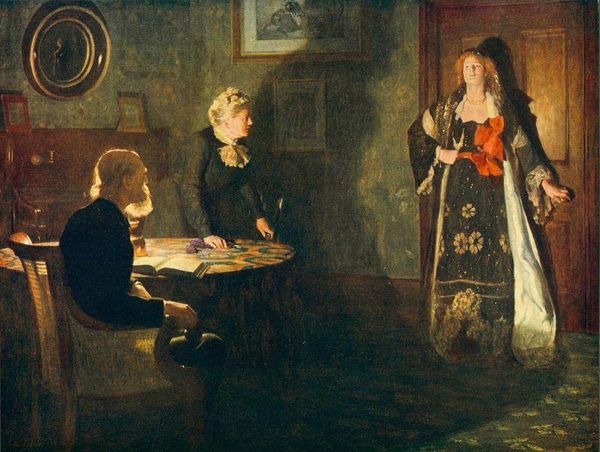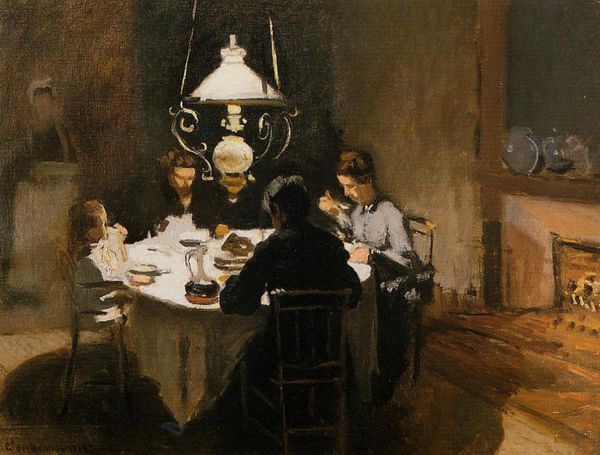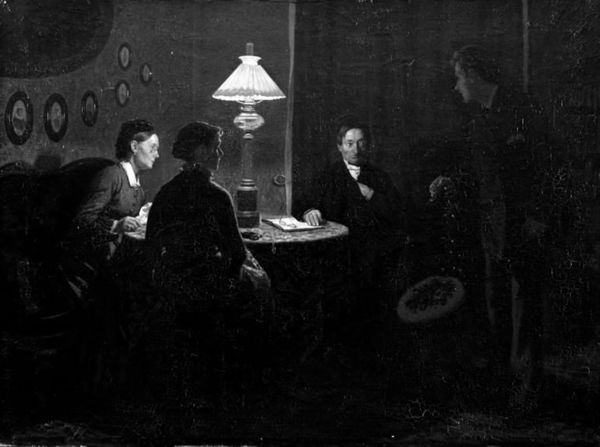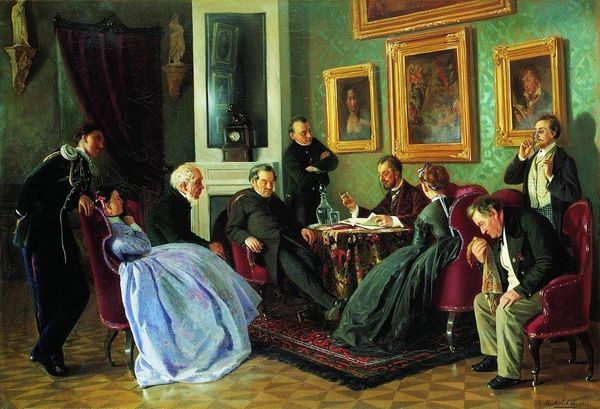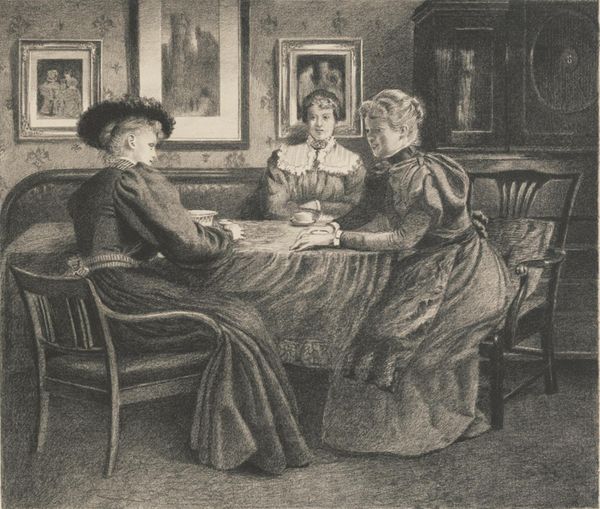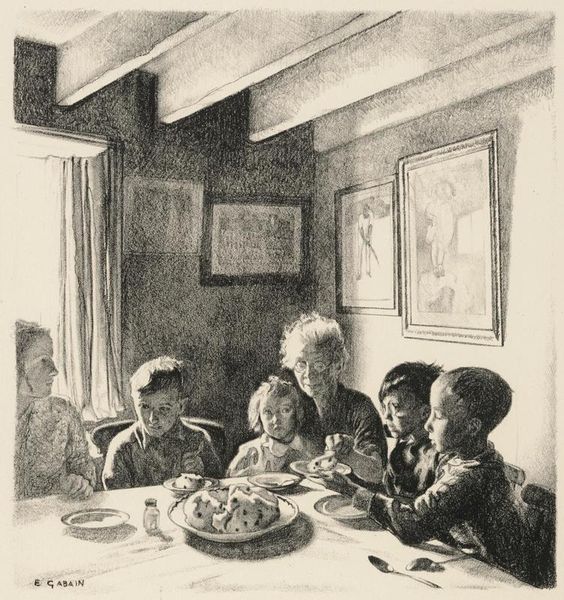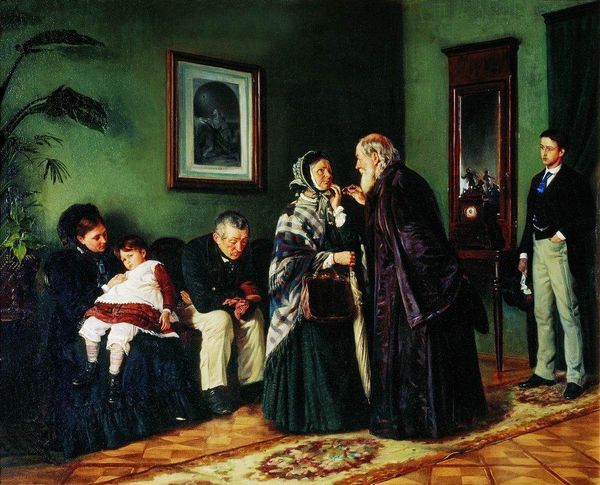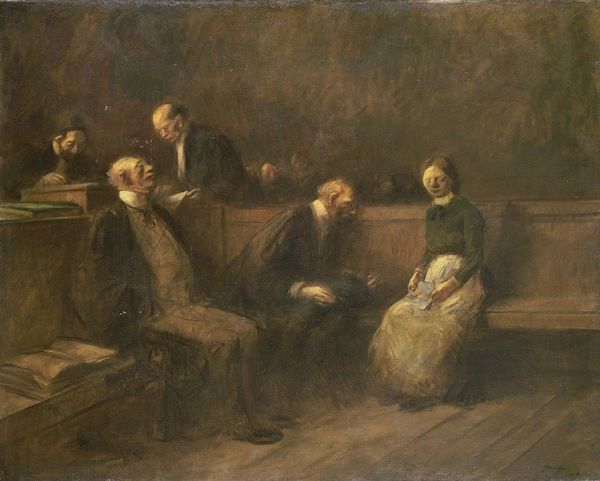
painting, oil-paint
#
gouache
#
painting
#
oil-paint
#
oil painting
#
group-portraits
#
romanticism
#
watercolour illustration
#
genre-painting
#
academic-art
#
watercolor
Copyright: Public domain
Editor: Here we have Adolph Menzel's "Abendgesellschaft," painted in 1847, a scene rendered with oil paint. There’s a stillness to it, a quiet domesticity that almost feels staged, like a tableau vivant. What strikes you most about its formal qualities? Curator: The painting immediately presents a fascinating tension between interior space and human form. Note the dominance of the horizontal—the sofa, the table, the implied line of the figures themselves. How does this horizontal emphasis influence your reading of the scene's mood? Editor: It makes it feel very grounded, stable almost. The red sofa really pops! I am not sure why everyone looks like they're asleep. Curator: Precisely. Now consider the color palette. Muted tones, with that strategic injection of crimson. Semiotically, what could red connote within this intimate domestic setting? Is it passion, discomfort, or something else entirely given the other shapes and patterns we are seeing in the setting? Editor: Maybe it suggests suppressed energy, contrasting with the subdued atmosphere? It also feels almost theatrical. Is it intentional on Menzel's side? Curator: Think about the arrangement of the figures. No one directly engages with another, yet they are undeniably linked within the composition. Notice how the light from the lamp reflects the different objects in the room creating highlights. How does this fragmentation contribute to the overall meaning of the artwork? Editor: I now appreciate the composition's tension – the stability of the horizontals versus the implied narratives suggested by the figures. It creates this unresolved, dreamlike feeling. Curator: Precisely. Menzel orchestrates these formal elements to generate a specific feeling for us and maybe raise an internal conflict. Editor: It really challenges my initial assumption about it being a simple genre scene. I am actually seeing more going on now. Thank you!
Comments
No comments
Be the first to comment and join the conversation on the ultimate creative platform.
